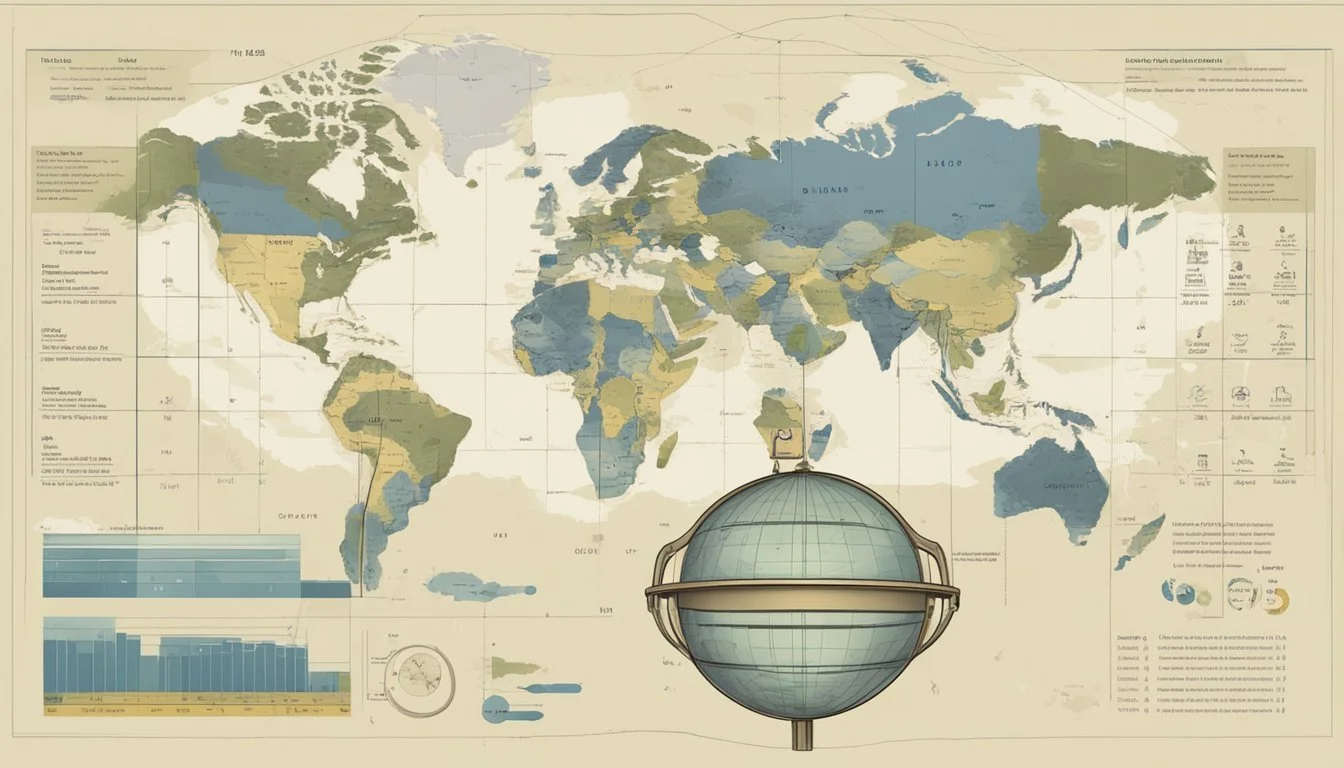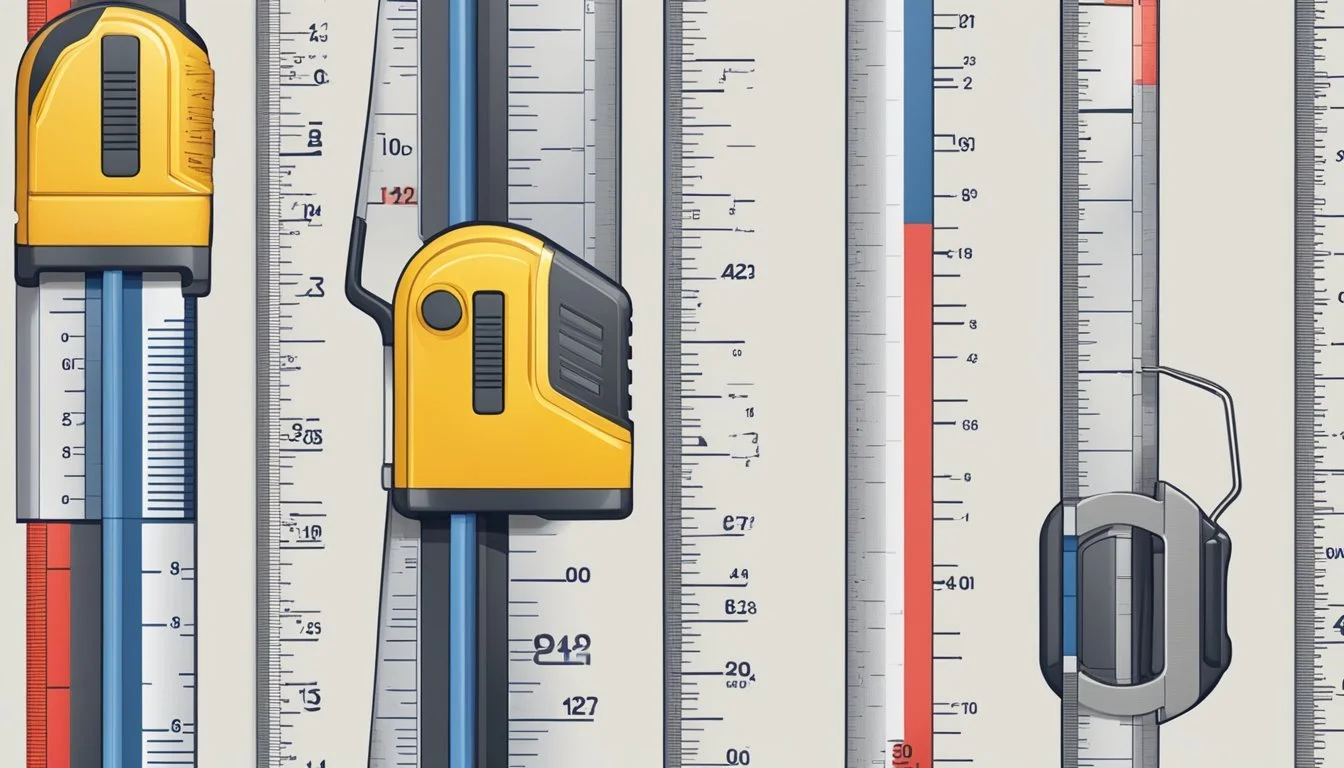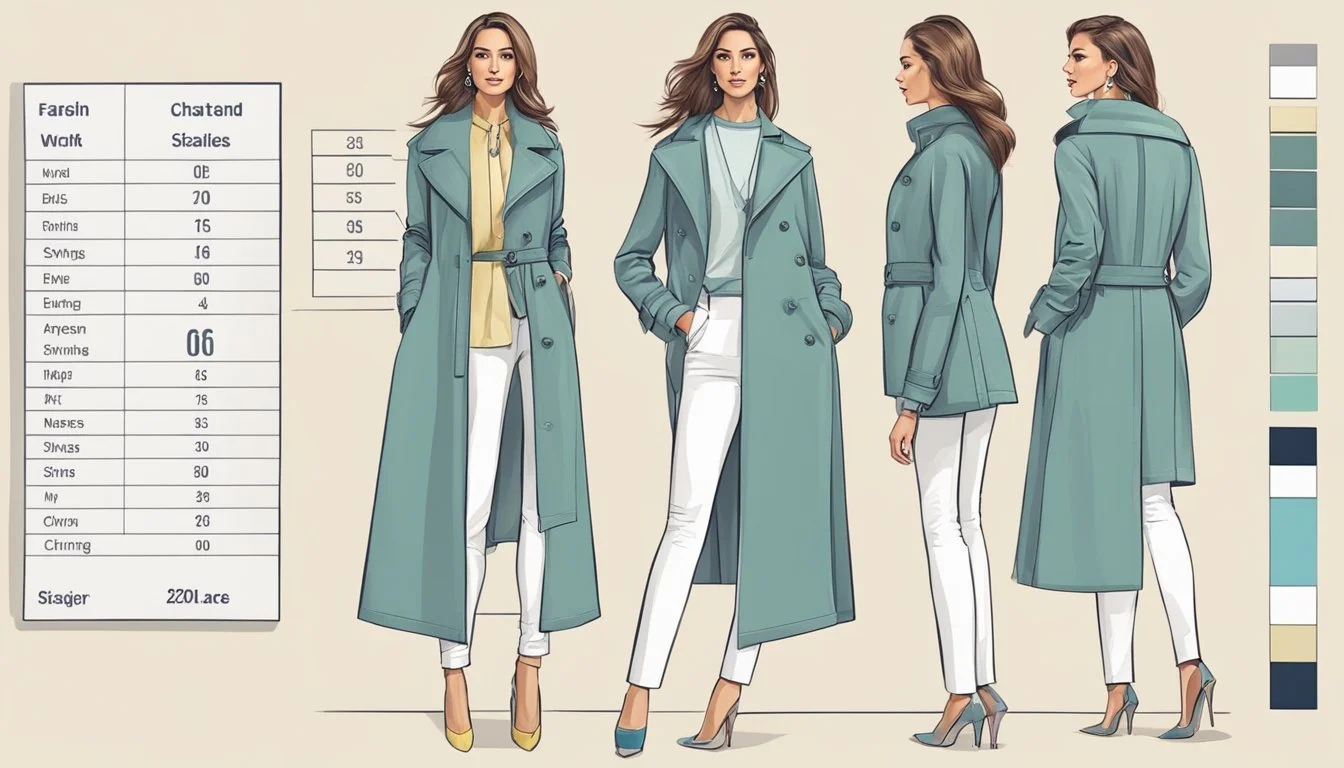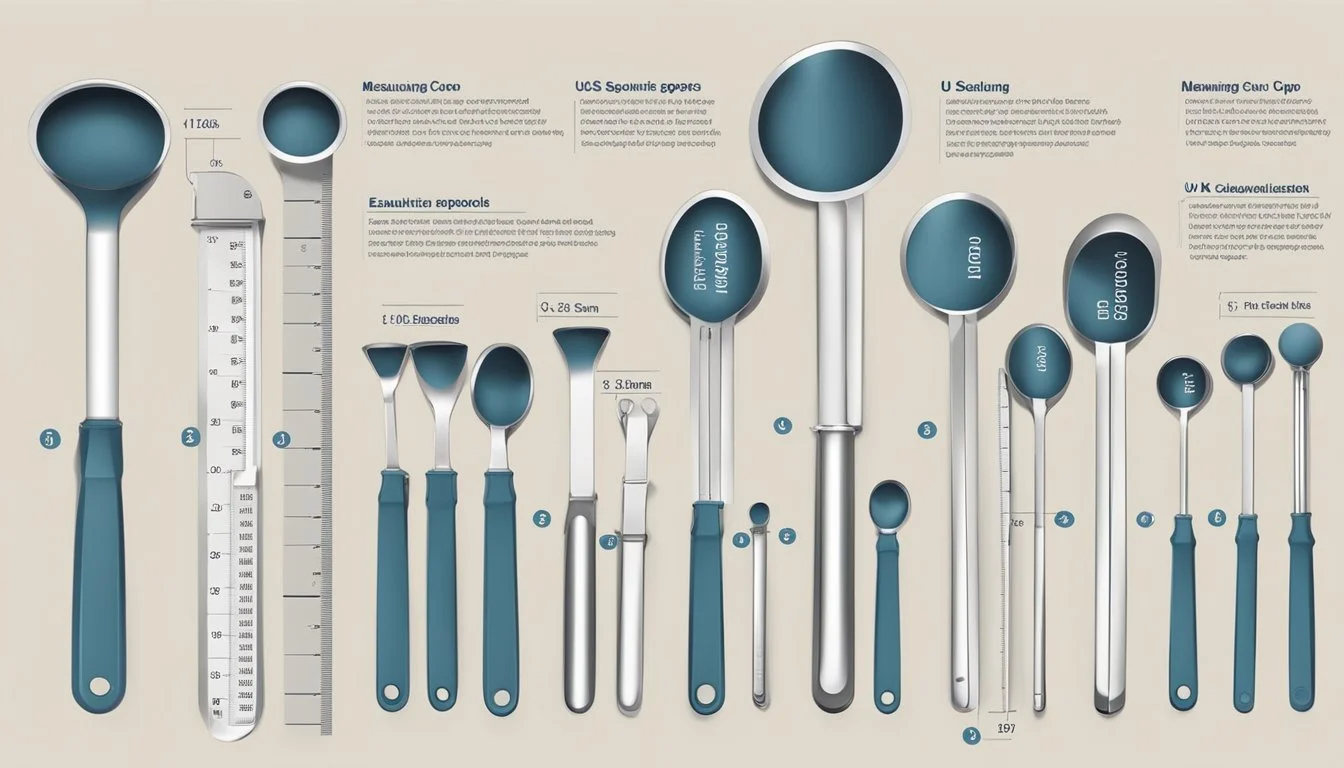Understanding the Difference Between US and UK Measurements
A Complete Guide
Understanding the differences between US and UK measurements is essential for consumers and businesses navigating the global marketplace. While both countries use the English language, they have distinct systems of measurement that can cause confusion and inconvenience if not interpreted correctly. The US typically relies on inches and feet within its customary system, whereas the UK uses both the imperial system and the metric system, resulting in a mix of units including centimeters and meters, especially for apparel sizing.
Shoe sizing exemplifies the discrepancy between the two nations, with the US and UK sizes differing for both men and women. In shoes, a man's size in the UK is half a size smaller than the US equivalent; a UK men's size 8, for instance, is a US men's size 8.5. Women's sizes show a more considerable variation, with a size 7 in the UK equating to a size 9 in the US. This distinction underscores the need for precise conversion charts and an understanding of each sizing protocol to ensure consumers select the correct size.
Clothing sizes also diverge, with the UK system using centimeters and the US using inches to classify sizes. This difference leads to a numerical gap whereby a size 10 in the UK is a size 6 in the US. As a consequence, international shoppers and retailers must be adept at converting these sizes to avoid the pitfalls of incorrect fitting, which can be a more significant issue when purchasing items without trying them on, such as in online shopping scenarios.
Historical Context of Measurement Systems
The British Imperial System originated in the United Kingdom. This system was implemented in 1824 and became the standardized method for weights and measures. Before its establishment, a multitude of local and regional measurement systems existed, which often led to confusion and inefficiency.
The United States, having been a collection of British colonies, inherited the British system of measurements. After gaining independence, the US developed the United States Customary System, which, although similar to the British Imperial System, had some differences in units of measurement such as volume.
With the advancement of science and the need for universality in measurements, the metric system came into being. It was first adopted by France in the late 18th century and is based on a decimal system that uses units such as meters and liters. The metric system has since been adopted by most countries worldwide due to its ease of conversion and use in international trade and science.
The British Imperial System was used officially in Great Britain until the country began a transition to the metric system in 1965, a transition that is still not fully complete. They now legally define imperial units in metric terms.
System Country of Origin Metrication British Imperial United Kingdom Adopted metric in 1965 US Customary United States Partially metricated
While the US still uses its customary system in daily life, it has also seen partial adoption of the metric system, particularly in scientific, military, and industry contexts. The dual existence of measurement systems underscores the historical ties and divergences in practices between the UK and US.
Basics of US and UK Measurement Units
Differences in measurement systems between the US and UK can affect everything from cooking to construction. This section provides an overview of key units of measurement for length and distance, volume and capacity, as well as weight and mass that are used in the US and UK.
Length and Distance
Inches: Both the US and UK use inches, where 1 inch is equivalent in both systems.
Foot: In both countries, 12 inches constitute 1 foot.
Yard: A yard equals 3 feet in both the US and UK.
Volume and Capacity
Fluid Ounce: The US fluid ounce is 29.573 milliliters, whereas the UK Imperial fluid ounce is 28.413 milliliters.
Pint: In the US, 1 pint is equal to 473.176 milliliters, whereas the UK pint is larger at 568.261 milliliters.
Quart: The US quart is defined as 946.353 milliliters, contrasting with the UK quart at 1,136.52 milliliters.
Gallon: While a US gallon measures 3.785 liters, a UK gallon is larger at 4.546 liters.
Weight and Mass
Ounce: For weight, 1 ounce equals 28.3495 grams in both measurement systems.
Pound: The pound is universally recognized as 16 ounces or approximately 453.592 grams.
Measurement System Conversion
This section provides a clear understanding of how to convert key measurement units between the US and UK systems. Accurate conversions are crucial for tasks ranging from cooking to garment selection.
Length Conversion
Converting between US and UK length measurements typically involves inches and centimeters. One inch equates to exactly 2.54 centimeters. A conversion chart or conversion tool may help facilitate this process, avoiding calculation errors. For example:
1 inch = 2.54 cm
12 inches (1 foot) = 30.48 cm
Volume Conversion
Volume measurements differ significantly between the US and UK. For liquids, a US gallon contains 3.78 liters, while a UK gallon holds 4.54 liters. Understanding this distinction is critical, especially when dealing with recipes or chemical substances. A summarized conversion for volume might include:
1 US gallon = 3.78 liters
1 UK gallon = 4.54 liters
1 US fluid ounce = 29.57 milliliters
Clothing Size Conversion
Clothing sizes in the UK and US do not run parallel and can vary greatly between manufacturers. A general conversion chart is essential when purchasing clothes internationally. For women's clothing:
UK Size US Size 8 4 12 8 16 12
Shoe Size Conversion
Shoe sizes also require careful conversion. US and UK sizes for adults usually differ by about one or two sizes, with the UK sizes generally running smaller. For men's shoes:
UK Size US Size 9 9.5 10 10.5 11 11.5
Shoe size conversion can vary between brands and should be used as a guide rather than a definitive measurement.
Understanding Clothing Sizes
When buying clothes from different countries, one must be aware that the US and UK size charts use their respective systems. The US sizes are based on inches, while the UK sizes rely on centimeters. Ensuring an ideal fit requires understanding and converting these measurements.
Men's Clothing Sizes
For men's wear, US and UK sizing can be quite similar, but they still vary slightly especially in terms of formal wear such as suits. Typically, a US size will be one numerical value higher compared to its UK counterpart. For example, a US men's size medium t-shirt is often a UK size large.
US Size (inch) UK Size (cm) Waist Chest Small 48 28-30 34-36 Medium 50 32-34 38-40 Large 52 36-38 42-44 XL 54 40-42 46-48
Men should use a tape measure to take accurate body measurements of the chest, waist, and hip regions to refer to sizing charts effectively.
Women's Clothing Sizes
The key difference in women's clothing sizes between the US and UK is that US sizes are generally labeled two numbers less compared to the UK sizes. A size 8 for women's apparel in the UK corresponds to a size 4 in the US charts.
US Size UK Size Bust (inch/cm) Waist (inch/cm) Hip (inch/cm) 2 6 32/81 24/61 35/89 4 8 33/84 25/64 36/91 6 10 34/86 26/66 37/94 8 12 36/91 28/71 39/99
Women should also measure their bust, waist, and hip sizes and compare them with a size chart for a better fitting garment. Fashion designers may also base their sizes on height and overall body measurements which can lead to variations in sizing standards. It's recommended to always check the specific brand's sizing guide.
Fashion Industry Trends and Standards
In the realm of fashion, staying abreast of sizing trends and standards is of paramount importance for international retailers and manufacturers. EU sizing follows body measurements with a preference for slimmer and more fitted cuts, particularly significant in women's clothing. In contrast, US sizing generally offers looser and more relaxed cuts, which can impact customer service experiences as consumers navigate between systems.
UK sizing, while sharing similarities with its EU counterpart, often diverges enough to necessitate careful consideration by those engaging in international commerce. The disparity between these systems leads to a demand for standardized conversion charts to aid shoppers in making informed decisions. The presence of accurate and comprehensive size guides is bolstered by customer reviews, which frequently highlight the benefits or detriments of a specific size system.
Region Characteristics Trend Impact EU Slimmer, fitted cuts Favors petite lines US Relaxed, looser fits Comfort-oriented UK Similar to EU, variable Niche sizing needs
Recent trends indicate that the fashion industry must adapt to variable growth rates, with forecasts suggesting a 2 to 4 percent growth in 2024. Despite economic pressures, fashion leaders are streamlining their offerings to include both standard and unique sizing options for men’s and women’s apparel, recognizing the need for flexibility.
International standardization remains a topic of interest as shoppers increasingly rely on online reviews and globalized markets. Consequently, clear communication about sizing through customer service channels is essential. Enhanced synopsis of international sizes on retailers' websites serves the dual purpose of educating shoppers and fostering positive retail experiences.
Practical Tips for Consumers
When navigating between US and UK sizes, consumers should focus on accuracy and familiarity with different sizing systems to ensure a positive shopping experience.
Reading Size Charts
Consumers should always refer to size charts provided by retailers. These charts typically list corresponding US sizing and UK sizing, including dimensions for chest, waist, and hips. For online shopping, it's crucial to compare the measurements in inches or centimeters to determine an accurate size.
Understanding Men's and Women's Size Differences
Differences between men's sizes and women's sizes can be significant. In general, men's clothing sizes tend to be larger and longer compared to women's. For instance, a men's size medium often allows more room in the shoulders compared with the women's medium. Shoppers should research how a brand's sizing runs and read customer service notes or reviews for guidance.
International Shopping Considerations
When purchasing from international retailers, factor in the EU size as well, which can be a useful reference. Contact the retailer's customer service for clarity if needed. Be aware that returns could be more challenging across borders, so thorough research prior to purchase is advisable to minimize the need for returns. Shoppers should also account for potential import taxes and shipping times.
Online Shopping and Customer Service
When purchasing clothes from international retailers, online shoppers often encounter the challenge of converting between UK and US sizes. Retailers can provide excellent customer service by helping customers navigate these size differences. Clear size charts are a must for shoppers to compare their body measurements to the available sizes. Retailers should have a size guide that includes:
US sizes (numeric): Typically, even numbers from 0 to 16.
UK sizes (numeric): Often even numbers, with the numerical size typically two sizes smaller than the US equivalent.
EU sizes (numeric): Different system where, for example, a US size 6 converts to an EU 36.
Here's a simplified conversion table for women's clothing sizes:
US Sizes UK Sizes EU Sizes 0-2 (XS) 4-6 32-34 4-6 (S) 8-10 36-38 8-10 (M) 12-14 40-42 12-14 (L) 16-18 44-46
Customer reviews can be a useful resource, offering insights into the accuracy of sizes and the quality of the clothing. Shoppers should examine feedback from others who have purchased and tried on the garments.
Retailers should train their customer service teams to assist with international size conversion queries. Customer service can make or break the online shopping experience, especially when customers are uncertain about their size.
When buyers communicate with customer service, reps should be clear and responsive. They should understand the intricacies of fashion sizing and be ready to guide customers through the process of finding the right fit. This involves:
Promptly answering size-related questions
Providing detailed body measurement instructions
Offering advice based on customer feedback and commonly asked questions
A confident and knowledgeable approach to customer service can help ensure that shoppers have a positive experience, even when faced with the complexities of international size conversions.
Footwear Sizing Explained
Understanding footwear sizing requires a clear grasp of the different measurement systems used in the US and the UK. Shoe sizes can vary notably between these two countries due to distinct sizing conventions.
Men's Shoe Sizes
In men's footwear sizing, there is a subtle but crucial difference between the US and the UK measurements. Generally, US men's shoe sizes tend to be about half a size larger than UK men's sizes. Here's a simple conversion to illustrate this:
US Men's Size 10 = UK Men's Size 9.5
US Men's Size 11 = UK Men's Size 10.5
When purchasing men's shoes, it is essential to check the specific sizing chart of the brand, as there might be slight variations.
Women's Shoe Sizes
The difference in women's shoe sizes between the US and UK is more pronounced than in men's. Typically, a woman's shoe size in the UK is two sizes smaller than the US. Here's a basic conversion guide:
US Women's Size 7 = UK Women's Size 5
US Women's Size 9 = UK Women's Size 7
For women, particularly, it is imperative to refer to the shoe size conversion chart to ensure an accurate fit, as brands may have their unique sizing nuances.
Mathematical Understanding of Measurement Conversion
When dealing with transatlantic differences in measurement, one must have a solid grasp of the mathematical principles underpinning the conversion process. This involves either utilizing specialized conversion tools or performing manual calculations to bridge the gap between US Customary Units and UK Imperial Measurements.
Using Conversion Tools
Conversion tools offer a quick and efficient way to translate measurements from one system to another. They come in various forms such as online calculators, mobile apps, or conversion charts. These tools typically contain a database of conversion factors, allowing the user to input a number and select the units they wish to convert. For example, an individual might enter "10 inches" and receive the equivalent in "centimeters."
Example of a conversion tool:
Online calculator input:
10 inchesOutput:
25.4 centimeters
Doing Manual Calculations
When conversion tools aren't available, one needs to understand how to perform conversions manually. This generally involves memorizing key conversion factors. For instance, the fact that 1 inch equals 2.54 centimeters is crucial for length conversions.
List of common conversion factors:
Length:
1 inch = 2.54 centimetersVolume:
1 US gallon = 3.78541 liters,1 UK gallon = 4.54609 liters
To convert inches to centimeters manually, one multiplies the number of inches by 2.54. Conversely, to convert centimeters to inches, one divides the number of centimeters by 2.54. The manual calculation requires careful attention to unit cancellation and mathematical precision.
Basic Manual Conversion Process:
Identify the conversion factor.
Multiply (or divide) the starting value by the conversion factor.
Ensure units are correctly canceled out to reach the desired unit.
These mathematical conversions are pivotal in ensuring accuracy in everything from everyday tasks to technical fields requiring precise measurement data.







